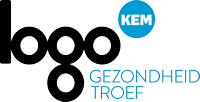No less than 51 % of the 2 254 participants in the campaign ‘Do not bury your head in the sand … do you know what type of groundwater comes from your well?’ use well water to drink, cook, do the dishes or wash themselves.
In order to limit health risks related to these types of use, the quality of the well water should be checked regularly. Something which is not done very often. In response to the campaign, 184 families agreed to the proposal to have their well water analysed by the Provincial Institute of Hygiene. They now know whether or not their well water meets the drinking water standards and whether the well water contains polluting substances such as toxic arsenic.
The results of this well water campaign confirm the problems that a lot of families experience, namely using well water for drinking water purposes without the certainty that the water meets the drinking water standards. This conclusion is in line with the recent results of the 3xG study, a local initiative that monitors the health of babies and mothers in Dessel, Mol and Retie. This study found that who, in these areas, uses well water to cook, is at risk of exposure to toxic arsenic.
Those who use well water to wash their car, flush the toilet, or water the lawn, are not putting their health at risk. For those who are also using well water to drink, cook, do the dishes or wash yourself, it is recommended to have the water checked on a regular basis. Therefore, Logo Kempen, together with fourteen Kempen municipalities, launched a large-scale campaign called: ‘Do not bury your head in the sand … do you know what type of groundwater comes from your well?’ From 25th April until 30th June 2017, inhabitants of Balen, Dessel, Geel, Herenthout, Herselt, Kasterlee, Lille, Mol, Ravels, Retie, Rijkevorsel, Vorselaar, Vosselaar, Westerlo could consult the online tool www.wateruitjeput.be.
By answering a few simple questions, the people in the Kempen could see whether it was necessary to have their well water tested for the things they are using it for. Those who filled in the questionnaire got personal advice and could directly sign up for a well water analysis.
Half of the participants use well water for drinking water purposes
In total, 2 254 people filled in the online questionnaire, in which they indicated the purposes of their well water consumption. No less than 51 % is using well water for drinking water purposes, with only 8 % of this group that had their well tested in the past year. This indicates that the remaining 92 % uses well water to drink, wash, cook or do the dishes without the certainty that this water is safe and is meeting drinking water standards. 37 % of the people that participated in the survey is actually drinking well water.
When we look at other uses, 71 % and 70 % water the lawn or vegetable garden with well water. 58 % use well water to wash the car. For flushing the toilet, 50 % uses well water. And another 43 % uses well water to clean.
184 well water analyses
People that use well water for drinking water purposes were given the opportunity to have their well water analysed. In total, 184 analyses were carried out by the Provincial Institute for Hygiene. In addition, the number of applications from the Kempen for a free water well analysis via the Flemish Government increased; an offer that applies to individuals who have no access to the public water network. The results were communicated to the stakeholders, after which they could decide whether or not to make further use of well water.
Background information 3xG
Health monitoring as a local condition
The study is carried out by the Flemish Institute for Technological Research (VITO), the University of Antwerp (UA) and the Provincial Institute for Hygiene (PIH) commissioned by NIRAS. It fits into the framework of the construction of the surface disposal installation for low and intermediate level short-lived waste that NIRAS is preparing in Dessel in collaboration with local partners STORA (Dessel) and MONA (Mol). Continuous health monitoring is one of the requirements of the local communities to accept this installation on their territory. In 2010, 3xG was launched as a feasibility study to find out how the health of an entire region can be monitored. At present, 300 mothers and their babies from Dessel, Mol and Retie are taking part in the study; they are the first birth cohort. Every ten years the research will be expanded with a new cohort of 300 new participants.
Personal health screening
The technique applied in the 3xG study is human biomonitoring. With this method, researchers are looking at biomarkers in blood and urine samples, representing contaminants and health effects in the body. Thus, one can determine whether there is a connection with polluting substances that are present in the region, and whether the contents in the body cause harmful effects. The analyses of all 300 participants are interpreted at group level. Consequently, the resulting findings are of interest to all inhabitants in the region. A second part of the study compares the official figures on illnesses and deaths in the municipalities of Dessel, Mol and Retie with the rest of the country.
More information about the study can be found at www.studie3xg.be.



